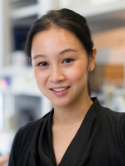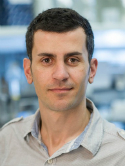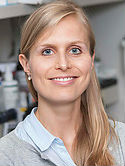Genomic landscape of adenoid cystic carcinoma of the breast Journal Article
| Authors: | Martelotto, L. G.; De Filippo, M. R.; Ng, C. K.; Natrajan, R.; Fuhrmann, L.; Cyrta, J.; Piscuoglio, S.; Wen, H. C.; Lim, R. S.; Shen, R.; Schultheis, A. M.; Wen, Y. H.; Edelweiss, M.; Mariani, O.; Stenman, G.; Chan, T. A.; Colombo, P. E.; Norton, L.; Vincent-Salomon, A.; Reis-Filho, J. S.; Weigelt, B. |
| Article Title: | Genomic landscape of adenoid cystic carcinoma of the breast |
| Abstract: | Adenoid cystic carcinoma (AdCC) is a rare type of triple-negative breast cancer (TNBC) characterized by the presence of the MYB-NFIB fusion gene. The molecular underpinning of breast AdCCs other than the MYB-NFIB fusion gene remains largely unexplored. Here we sought to define the repertoire of somatic genetic alterations of breast AdCCs. We performed whole-exome sequencing, followed by orthogonal validation, of 12 breast AdCCs to determine the landscape of somatic mutations and gene copy number alterations. Fluorescence in situ hybridization and reverse-transcription PCR were used to define the presence of MYB gene rearrangements and MYB-NFIB chimeric transcripts. Unlike common forms of TNBC, we found that AdCCs have a low mutation rate (0.27 non-silent mutations/Mb), lack mutations in TP53 and PIK3CA and display a heterogeneous constellation of known cancer genes affected by somatic mutations, including MYB, BRAF, FBXW7, SMARCA5, SF3B1 and FGFR2. MYB and TLN2 were affected by somatic mutations in two cases each. Akin to salivary gland AdCCs, breast AdCCs were found to harbour mutations targeting chromatin remodelling, cell adhesion, RNA biology, ubiquitination and canonical signalling pathway genes. We observed that, although breast AdCCs had rather simple genomes, they likely display intra-tumour genetic heterogeneity at diagnosis. Taken together, these findings demonstrate that the mutational burden and mutational repertoire of breast AdCCs are more similar to those of salivary gland AdCCs than to those of other types of TNBCs, emphasizing the importance of histological subtyping of TNBCs. Furthermore, our data provide direct evidence that AdCCs harbour a distinctive mutational landscape and genomic structure, irrespective of the disease site of origin. © 2015 Pathological Society of Great Britain and Ireland. Published by John Wiley & Sons, Ltd. |
| Keywords: | signal transduction; clinical article; human tissue; unclassified drug; gene mutation; gene sequence; human cell; single nucleotide polymorphism; somatic mutation; exon; frameshift mutation; cell proliferation; reverse transcription polymerase chain reaction; gene expression; gene expression profiling; protein; brca1 protein; brca2 protein; protein p53; uvomorulin; rna; cancer genetics; fluorescence in situ hybridization; gene rearrangement; ubiquitination; messenger rna; breast carcinoma; amplicon; mammalian target of rapamycin; fusion gene; alternative rna splicing; genomics; gene dosage; adenoid cystic carcinoma; tumor gene; cell adhesion; b raf kinase; salivary gland carcinoma; nonsense mutation; fibroblast growth factor receptor 2; genetic heterogeneity; triple negative breast cancer; triple-negative breast cancer; massively parallel sequencing; protein myb; exome; talin; sf3b1 protein; basal like breast cancer; human; priority journal; article; myb-nfib; fbxw7 protein; smarca5 protein; talin 2; breast adenoid cystic carcinoma |
| Journal Title: | Journal of Pathology |
| Volume: | 237 |
| Issue: | 2 |
| ISSN: | 0022-3417 |
| Publisher: | Wiley Blackwell |
| Date Published: | 2015-10-01 |
| Start Page: | 179 |
| End Page: | 189 |
| Language: | English |
| DOI: | 10.1002/path.4573 |
| PROVIDER: | scopus |
| PUBMED: | 26095796 |
| PMCID: | PMC4676955 |
| DOI/URL: | |
| Notes: | Export Date: 2 October 2015 -- Source: Scopus |
Altmetric
Citation Impact
BMJ Impact Analytics
MSK Authors
-
 317
317Chan -
 762
762Norton -
 207
207Shen -
 309
309Wen -
 105
105Edelweiss -
 646
646Weigelt -
 642
642Reis-Filho -
 155
155Ng -
 130
130Piscuoglio -
 69
69Martelotto -
 59
59Lim -
 38
38Schultheis -
 28
28De Filippo -
 10
10Wen
Related MSK Work



